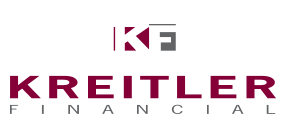After a bruising second quarter for stocks, investors enjoyed a summer rally. The hopes for this were dashed by the Fed’s resolute course to control inflation by increasing interest rates and stopping bond purchases in the market. Fed Funds rate increased to 3.25%, and the 10-year Treasuries rose from 1.5% at the beginning of the year as high as 4% in September. The financial markets reacted to this by pricing in a higher probability of a recession as consumers and companies have to pay more for the debt on everything from houses and cars to offices and equipment. ➀
By September 30, the S&P 500 was down 23.9% for the year. This has been painful, although we need to remember that market selloffs are normal. There have been 27 bear markets, defined as a decline of 20% or more, since 1928. In order to take advantage of the long term return of stocks, investors must be willing to tolerate these types of market swings. ➂
The bigger surprise to many investors has been the worst bond market in a generation. The US Bloomberg U.S. Aggregate Bond Index is down 14.6% for the year and has been one of the worse bond markets in history based on performance. Many investors hold bonds for one of two reasons. Either they need to ensure that money is money is available at a specified time in the future through the bonds interest or principal, or they hope to buffer the swings in the stock market by hoping bonds will increase at times stocks fall. Neither of those has worked and combining this with the poor stock market return through September makes this one of the most frustrating years ever for investors. In our portfolios, a tilt toward bonds with shorter maturities and diversification into different parts of the bond markets helped mitigate some of the declines.
One of the bright spots in portfolios has been real estate in those portfolios able to own it. As measured by the National Council of Real Estate Investment Fiduciaries, it increased in value 8.73% year to date. This surprised many who expected the impact of remote work to weigh on prices. In a year when very few things worked, diversification may still provide benefits.
There remains a high degree of uncertainty, particularly in the near term. War in Ukraine continues, and Putin remains unpredictable. Europe faces a winter with a reduced energy supply. China’s zero tolerance policy for Covid continues to disrupt global trade. The November elections may introduce uncertainty. There can also be unforeseen impacts from the major changes in interest rates and exchange rates. Global Central Banks are increasing interest rates, and global economic growth is slowing down.
This in turn is keeping the dollar strong. The dollar has reached parity with the Euro, and nearly did the same with the British pound. The U.S. Dollar Index (DXY) is up approximately 16% year to date. Companies or countries that have unsustainable debt loads may find themselves in trouble if their payments increase, either because of rates or because their payments are in a different currency.
On the other hand, uncertainty can also present risks to the upside. Markets often bottom before the economy, and often the do so when “less bad news” occurs instead of waiting for good news. This is the reason for a strategy that allows you to stay invested and resist the temptation for market timing. The S&P 500 had an annualized return of approximately 21% and 36% one year after the two worst performing days for stocks during the 2008-2009 Great Financial Crisis.
Real returns will be a much bigger part of portfolio conversations. Over the past 20-years, the S&P 500 Index had an annualized return of 9.84% and the U.S. Aggregate Bond Index returned 3.1%. During this time, inflation was 2.5%, so investors got a real (or after inflation) return of 7.2% for stocks and .6% for bonds. ➀
If we remain in an environment where inflation is higher than the recent past, this relationship becomes even more important. As of 9/30/22, the yield on a 10-year treasury bond is 3.8%. If inflation were still 2.5%, the expected real return on these bonds would be only 1.3%. What if inflation is higher? An inflation rate of 4.0% (50-yr Average Headline CPI) as of 8/31/2022 would reduce the expected real return of those bonds to about zero. ➀
Of course, the expected real return for stocks is also lower. Interestingly, though, the difference between the two real returns gets even larger. A positive real return from stocks is much better than a 0% real return. Investors need to consider this in their portfolio asset allocation, weighing whether the high expected volatility of stocks is worthwhile in seeking better real returns. Bonds will continue to play a role in meeting future cash needs and attempting to hedge equity risk and may provide positive real returns if inflation moderates.
Investors need to weigh the risk of near-term losses with the risk of underperforming inflation long-term if they miss a future upswing. If someone needs cash on a 3- or even 12-month basis, they are a short-term investor and should position themselves accordingly. On the other hand, investors with longer horizons may be well served by adding exposure to great companies through the stock market, but only if they can stomach what may continue to be high volatility in the weeks and months to come. In practice, many investors have both short- and long-term objectives, and portfolio strategy may be required to address both.
As always, we welcome your questions and are available to discuss your portfolio strategy.
Sources: ① YCHARTS, 2. J.P. Morgan Guide to Markets 4Q 2022, ③ Hartford Funds: Informed Investor Third Quarter 2022, 4. Tamarac Performance Data

